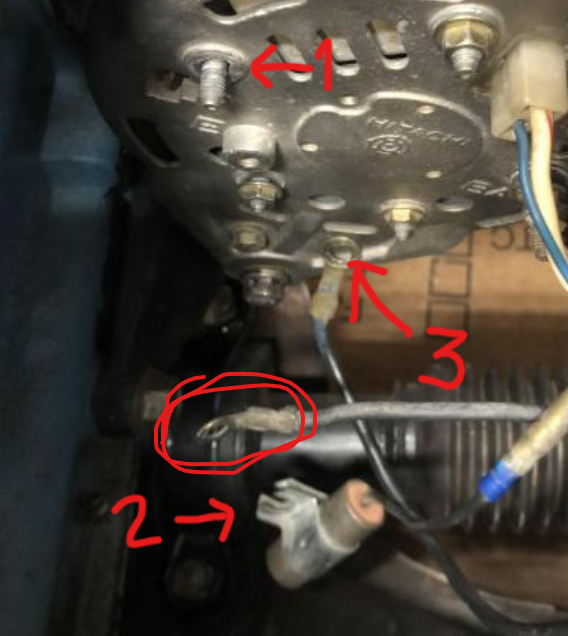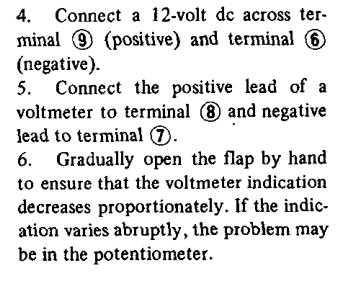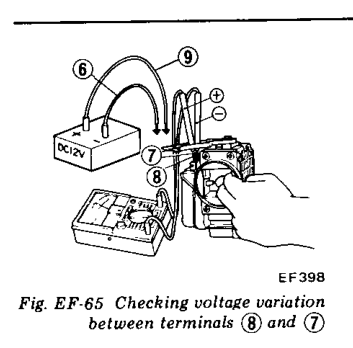Everything posted by Zed Head
-
Inspection on a 240Z in NW Pennsylvania?
I thought of CO too but I used to live by Philly and Pittsburgh is quite a drive. Just post up the ad. Odds are that anybody here already owns one and is not going to scoop you. We can do pretty good forensics from the pictures.
-
Rust Advice 78 280z
This is absurd, of course, but it sounded like a dry knock not a wet knock. Check your damper/crank pulley. I saw the rust title and the number of pages and can't really remember all of the details of this car and engine. Might be worth writing up a new "state of the situation" post.
-
New, to me anyway, Diff mount
It depends on how you use it. If you use the GM transmission mount on the top you can leave the Nisan bottom mount out completely.
-
New, to me anyway, Diff mount
It's only the diff mount that changed. Nissan created new parts to move the diff back so that it was aligned with the wheel centers. A new mount, mustache bar and propeller shaft. You can tell if you have the early style by eyeballing the half-shafts. If they aren't at 90 degrees with the wheels they're the early style.
-
New, to me anyway, Diff mount
Somebody on CZCC posted about their using a solid mount not too long ago. It probably transmits diff howl to the cabin, especially if you also have polyurethane crossmember mounts. The race car guys have pictures of the bolt holes tearing out to to metal fatigue, but that's probably just a high-torque/abuse problem. MSA sells them also. https://www.thezstore.com/page/TZS/PROD/10-2296 The Technoversion mount is always worth considering. https://www.technoversions.com/DiffMount.html
-
1978 stock alternator wiring
Take your multimeter and see if it's a ground wire (connected to the negative battery cable). Ground wires connect to E(earth). Earth = Ground.
-
1977 280z EFI Nightmare
https://tameson.com/about-us.html https://tameson.com/choosing-an-ac-or-dc-coil-for-a-solenoid-valve.html#:~:text=Solenoid working principles&text=Solenoids are electromechanical devices that,such as iron or steel. The polarity of the electrical contacts is not important with AC and DC solenoid valves. With AC solenoid valves, this might be obvious because the current switches polarity twice per period anyway. With DC solenoid valves the reasoning is that current passing through the coil creates an electromagnet which produces an attractive force on the armature. When current is applied through the coil, the armature will always be pulled towards the coil, regardless of the contact and current polarity.
-
1977 280z EFI Nightmare
Not really clear what you're saying here. No offense.
-
1978 stock alternator wiring
- Engine leans out over 2400 rpm
- Engine leans out over 2400 rpm
Another random thought. If the AFM is old the carbon trace could be bad. Maybe there's a certain point of the vane travel where the AFM sends bad data to the ECU. One of the AFM tests is to run it through its travel and watch resistance or voltage. Can't remember which. Found it. It's in the FSM but not the Guidebook. Page EF-51 in the 76 FSM. Edit - you can clean the trace with contact cleaner. Hose it down, move the vane. See what happens.- Engine leans out over 2400 rpm
So, you have some inconsistencies, which are probably clues. I just reread your first post and see the vacuum reading. That's a good number. Your fuel pressure at idle should be down around 28 psi. I've had that on mine. Maybe you have a bad fuel pressure gauge. Not uncommon. Maybe you have bad FPR. If it's original the diaphragm can stiffen up. There's a big hose under the intake manifold that connects to the side of the block. That's the main PCV hose. They can fail. Can you describe the problem better. "It accelerates up to about 2500 rpm and then it falls flat on its face. " is not very much. Is it always right at 2500? Does it make any noises when it fails? Does it recover immediately at 2300 RPM? Stuff like that. The suggestion to watch the pressure gauge while driving is a good one. Might be something weird like losing pump power. Under acceleration fuel pressure should stay up around 36 psi.- Engine leans out over 2400 rpm
It's kind of funny how automotive mixes up so many different types of measurement, but you can calculate the fuel pressure drop from the intake manifold vacuum, and vice versa. A good running engine will have about 16 inches of vacuum at idle. Convert that to pressure and it tells you how much drop the FPR should cause. About 7.8 psi. 36.3 - 7.8 = 28.5 psi. 14 inches gives 29.4 psi. 32 psi correlates to 8.8 inches of vacuum. Not very good. Could be valves, timing, vacuum leaks. Just more clues to work with. https://help.summitracing.com/app/answers/detail/a_id/5306/~/engine-vacuum https://www.onlineconversion.com/pressure.htm- Engine leans out over 2400 rpm
- Engine leans out over 2400 rpm
- Engine leans out over 2400 rpm
I would set the AFM back to where it was. What happens when you increase RPM under no load? When the engine "falls on its face" what is the tachometer needle doing? The tach needle is a good way to see what's happening with your spark. Does it pop back through the intake and buck when it loses power? If so, try the coolant sensor tweak. It's better than the AFM adjustment. https://www.atlanticz.ca/zclub/techtips/tempsensorpot/index.html- EGR Question
It should do the trick if the internal wall is intact. If it was in my garage I might rig up a hose to that hole and blow on it to see if it's sealed. A simple way to tell, I think.- Which way to install new Nissan fuel punp?
Big nipple inlet, little nipple outlet.- 1977 280z EFI Nightmare
The cam lobes that have a shiny line all the way around the lobe are probably too tight. The portion of the lobe with no ramp should not be contacting the rocker arm pad. That's where the lash, or gap, is measured. I'd recheck all of the lash measurements. Hard to tell on your spray bar. The head bolts and various crevices are all full of oil. Probably fine once the engine starts. Your cam doesn't look bad considering the time that it's been running. Once they start to grind up the lobes it happens pretty fast. Disconnect the negative terminal of the coil and the sparking will stop. Somebody just posted about blocking an EGR and I remembered the problems people have had with internal EGR leakage. You might check your EGR passages to be sure that they're actually blocked off. Might be one of the mystery sources for some of your problem.- EGR Question
The block-off plate on the top is supposed to seal that passage from the one that connects to the intake manifold passage. But sometimes they rust at the sealing surface or between the exhaust passage and the intake passage. Shine a light down there and see if it's solid. Check the top sealing surface. Or just put a plug in it just in case.- Spicer U-Joints
https://spicerparts.com/parts?category=2 Click the "e-catalog" and it takes you to Dana parts. https://www.danaaftermarket.com/search?cat1=LVB&from=20&size=10&y=1976&mk=Nissan&md=280Z&ymmType=AUTO- Spicer U-Joints
I haven't fleshed out all of the details but I think that Dana bought Spicer. So, if you can't find Spicer it might be that Dana retired it. You can get Dana parts though. It's weird that Rockauto doesn't carry Precision. For the miles you expect from them, and the agony if they're of poor quality, I'd spend as much as necessary to get the best. https://www.dana.com/newsroom/press-releases/dana-introduces-spicer-dura-tune-center-bearing-for-smoother-quieter-operation-for-downsped-drivetrains/ https://www.rockauto.com/en/catalog/nissan,1976,280z,2.8l+l6,1209226,drivetrain,universal+joint,2392- 1977 280z EFI Nightmare
It looks like you are past Nightmare though, the engine runs and revs and it seems like you're close. Kind of in to recurring weird dream territory, like the one where you're naked at a job you used to have and nobody is really sure why you're there. You guys have that one, right...?- 1977 280z EFI Nightmare
Here's an old thread about wipe patterns. It's an enjoyable topic.- 1977 280z EFI Nightmare
You mentioned overtightened valves. That is very bad. It will make the engine run rough and if you do "burn" a valve, the valve is ruined. You'll have to remove the head again. So, I'd get on that right away. Check your rocker arm wear pads and see if you can tell where the cam lobe is riding. Wipe pattern. Also, I don't know how you chose 18 degrees for initial timing. 10-14 is a common range for people trying to get a little extra power. 7 is the spec., I think. 18 is high.
Important Information
By using this site, you agree to our Privacy Policy and Guidelines. We have placed cookies on your device to help make this website better. You can adjust your cookie settings, otherwise we'll assume you're okay to continue.









